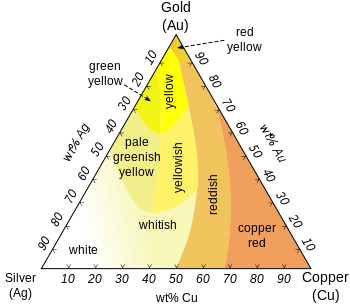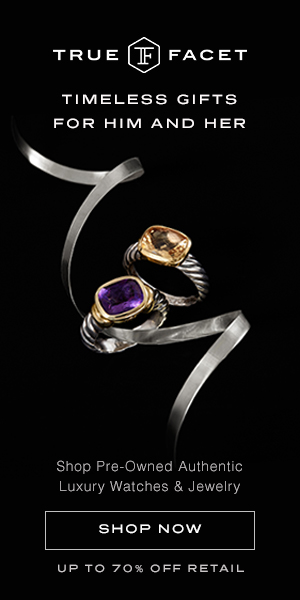Metals in the Mix: A Guide to Jewelry Metal
When buying fine jewelry, it’s easy to focus on the precious stones in the center that draw the eye and overlook what is arguably one of the most important parts of a piece: the metals into which those stones are set.
There are several things that go into the quality of metals, including which substances they’re mixed with, the balance between the metals, the way the metal is constructed into a piece and so much more. In view of that, we have put together this guide to the most common and sought-after jewelry metals: gold, silver, and platinum.
Metals are classified based on the chemistry of the metal. Noble metals—like gold, silver and platinum—are more scarce (and therefore more expensive) than base metals, but they are stronger, less likely to corrode, and more resistant to oxidation. Base metals like iron, nickel, and copper are more common, but they are not as durable as noble metals. In an effort to maintain the durability of jewelry but also produce affordable pieces, jewelers have found a sweet spot, so to speak, where they mix noble metals with base metals to create different kinds of alloys that are attractive, affordable, and long-lasting.
Gold:
Gold is one of the most desired metals in jewelry making because of its rarity and luster. Since gold is extremely soft and malleable, it is easy to work with in jewelry making, but it has to be alloyed with base metals like copper or zinc to make it more durable. However, despite its softness, purer gold is more expensive. In the jewelry industry, the purity of gold is represented in karats, with 24K gold being 100 percent pure and 10K gold—the minimum to be considered gold in the U.S.—ringing in at only 41.7 percent pure. The base metals that pure gold is mixed with and the purity of the gold in the mix are instrumental in deciding the color of the final product, which we have illustrated here:

Yellow Gold: Gold is naturally yellow in color, however, since pure gold is very soft, it is usually alloyed with copper, silver or zinc.
White Gold: To create the white-silver color, the gold is alloyed with metals like zinc, nickel and platinum. However, white gold usually needs to be coated with platinum or rhodium for durability and shine. Often, white gold jewelry needs to be re-plated with those metals again after the coating wears off.
Rose Gold: Rose gold is gold alloyed with copper to create a reddish hue. The more copper, the less pure the gold is, but the redder the metal will appear.
There are several ways in which a jewelry designer can use gold. A designer might choose not to use solid gold in an effort to lower production costs or to use up other kinds of metals they have in-shop. The following are different ways jewelers create jewelry using gold.
Gold-Plated: An item that is gold-plated must be coated with gold that is at least 10k. A base metal is electroplated with the gold in a very thin layer. Since the layer is so thin, the plate will wear over time and the jewelry will need to be re-plated.
Gold-Filled: A gold-filled item might sound similar to a gold-plated item in theory, but the quality and composition of the two are incredibly different. Gold-filled items are made of a core metal that is usually brass or copper. The core metal is then layered on the top and bottom with a proportional amount of gold. The difference is that, while gold-plated jewelry will rub off and need to be re-plated, gold-filled jewelry will not.
Gold Vermeil: Gold vermeil jewelry, unlike the former two, is coated in a much thicker layer of gold. The core metal of gold vermeil jewelry is usually sterling silver, a very strong alloy, and the purity of the gold layer must be at least 14 karats. Out of these three gold-layering options, vermeil is the most durable.
Silver:

Photo Credit: tiffany.com
Silver is another noble and precious metal. It is not rated in karats, but in fineness, which is the percentage of pure silver in the alloy. Like gold, pure silver is not typically used in jewelry-making due to its softness, so it is typically alloyed with other metals, specifically copper.
Sterling silver is the alloy that is produced from pure silver and copper, and it has a fineness of 92.5 percent. The copper in this alloy makes it more durable and doesn’t affect the color of the final product like it does with gold, but it does make the silver more prone to tarnishing and oxidization.
Platinum:

Photo Credit: goldforum.kitco.com
Platinum is even rarer than gold, and more expensive, too. It is the most durable of all the precious metals, but due to its rarity, it is not common in jewelry making. Its white-silver color makes it preferable to those who would like white gold, but are allergic to nickel, with which white gold is often alloyed.








